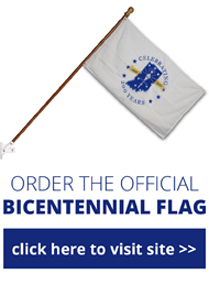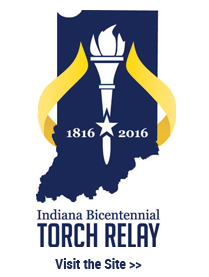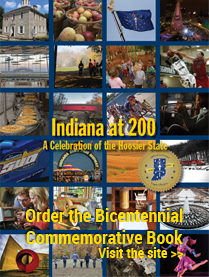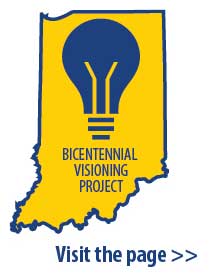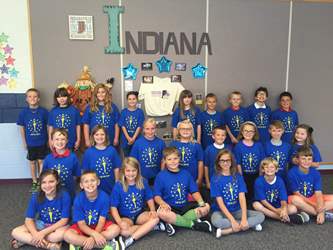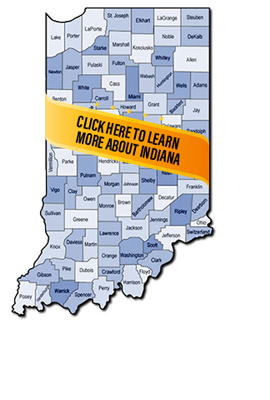- Business & Agriculture
- Residents
- Government
- Education
- Taxes & Finance
- Visiting & Playing
- Family & Health
Harrison County
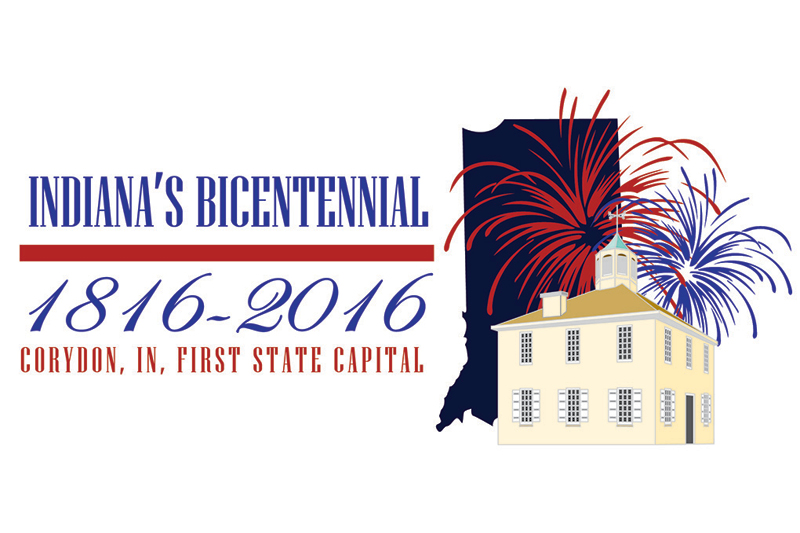
Q&A with County Coordinators Pam Bennett-Martin and Judy Hess
What do you consider the key accomplishment(s) of your county’s bicentennial celebration?
- The community collaboration / cooperation that occurred during our work on the Bicentennial. We saw a re-energized downtown Corydon. We are very proud of the Torch Relay kick-off that happened here in Corydon. We have several other long term projects that came from the Bicentennial!
What Legacy Project do you most like to tell people about, and why?
- We are proud of all of them!
Describe a highlight or most memorable moment related to your county's bicentennial celebration.
- The torch relay kick-off was awesome! Our local planners worked side by side with the State and kicked off this great event with a BANG!
How/where are you preserving information and artifacts related to your county's celebration?
- Several ways. Our new Harrison County Discovery Center has some of it and we are in the process of wrapping everything up now and working on a way to keep everything.
Total number of volunteers who participated.
- 150+.
Estimated total attendance.
- 10,000.
Estimated dollar amount raised.
- $400,000.00.
Estimated dollar amount spent.
- $400,000.00.
Harrison County Legacy Projects
- 1816 Capitol Dancers
- 2016 Parade: IN 200th Birthday
- 50th Reunion of Pennington Descendants
- Art at the Old Capitol
- Bicentennial "Did You Know?" Articles Published in the Corydon Democrat
- Birth of a State: The Indiana Exhibit at Corydon Capitol State Historic Site
- Blue River Frontage– Bicentennial Nature Trust
- Buffalo Trace Educational Boxes
- Commemorative Petition for Statehood
- Corydon Capital Days
- Down in Old Corydon
- First Families of Floyd, Clark and Harrison Counties
- Harrison County Bicentennial Spark 4-H Club
- Harrison Exhibit
- Historic Corydon, Indiana from A-Z
- Indiana African American Heritage Trail Project
- Just Come to Indiana
- Ohio River Glades – Bicentennial Nature Trust
- Old Morvin Acquisition – Bicentennial Nature Trust
- Playwright Contest & Theatrical Production
Photos from Harrison County's Bicentennial Activities / Events
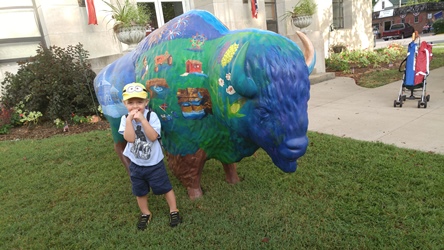
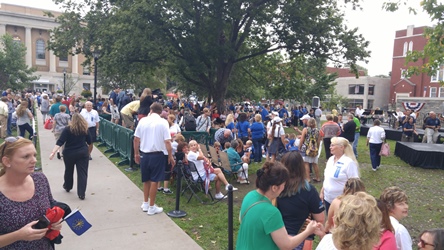



.jpg)
Harrison County Facts
Harrison County was named for William Henry Harrison, the first governor of Indiana Territory, and later a General in War of 1812, hero of Tippecanoe, and the 9th U.S. President. Harrison was the largest land holder in the county at the time and had a small estate at Harrison Spring.
Frank O’Bannon was born in 1930 and was raised in Corydon. He attended Indiana University, where he earned degrees in government and law; he also served for two years in the Air Force.
He was a state senator for 18 years and served as the lieutenant governor for 8 years before becoming governor in 1997. In 2003, he died in Chicago from complications from a stroke before his term was ended; he was 73 years old.
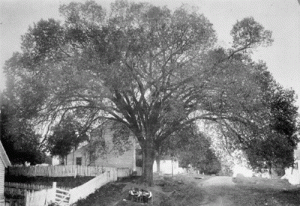 Indiana’s historic Constitution Elm in Corydon. During the 1816 Constitutional Convention in Corydon, many discussions and debates took place outside beneath this elm tree because of the summer heat.
Indiana’s historic Constitution Elm in Corydon. During the 1816 Constitutional Convention in Corydon, many discussions and debates took place outside beneath this elm tree because of the summer heat.
The “Constitutional Elm” died in 1925 of Dutch Elm disease, but its trunk was preserved and pieces were stored away. Some of those pieces were used to build the display case for the documents in the Statehouse Rotunda.
Each year from December 11, Statehood Day, to the close of the legislative session, the restored state constitutions can be found in the Rotunda.
When you visit Corydon, be sure to visit the trunk of the “Constitutional Elm.”
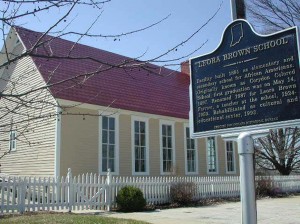 The Leora Brown School was originally established in 1891 in Corydon and was known as the Corydon Colored School. The first graduation took place in 1897. The school closed as a segregated school in 1950. It was renamed for Leora Brown who taught at the school longer than any other teacher. It now serves as a cultural education center since 1993 as part of the Indiana African American Heritage Trail.
The Leora Brown School was originally established in 1891 in Corydon and was known as the Corydon Colored School. The first graduation took place in 1897. The school closed as a segregated school in 1950. It was renamed for Leora Brown who taught at the school longer than any other teacher. It now serves as a cultural education center since 1993 as part of the Indiana African American Heritage Trail.
The Harrison-Crawford State Forest was started in 1932 when the State of Indiana purchased land in western Harrison County. The 26,000-acre (110 km2) park is the largest state forest in Indiana and surrounds the O’Bannon Woods State Park and Wyandotte Caves, located in eastern Crawford County.
Before Indianapolis, Corydon served as the state’s capital from 1816-1825. Vincennes was the capital when Indiana was a territory.
Paul and Susanna Mitchem became Quakers and immigrated to Harrison County from North Carolina in 1814, bringing with them 107 slaves they freed after arriving. Although some of the former slaves left, the group became one of the largest communities of free blacks in the state.
Corydon was officially platted in 1808 and became the capital of the Indiana Territory in 1813. Many of the state’s early important historic events occurred in the county, including the writing of Indiana’s first constitution.
Corydon was the state capital until 1825, but in the years afterward remained an important hub for southern Indiana. In 1863 the Battle of Corydon was fought, the only battle of the American Civil War to occur in Indiana.
County Seat: Corydon
Year Organized: 1808
Square Miles: 484.52
Harrison County Steering Committee
- Pam Bennett Martin
- Judy Hess
- Dan Bays
- Chris Fisher
- Jeremy Yackle
- Lou Ann Baker
- Laura VanFossen
- Lisa Long
- Gary Davis
- Kenny Saulman
- Leah Porter
- Eva North
- John D. Kintner
- Gary Geswein
- Ann Windell
- Norma Lincoln
- Bob Woosley
- Bill Brockman
- Alisa Burch
- Catherine Turcotte
- Bec Riley
- Larry Bennett






